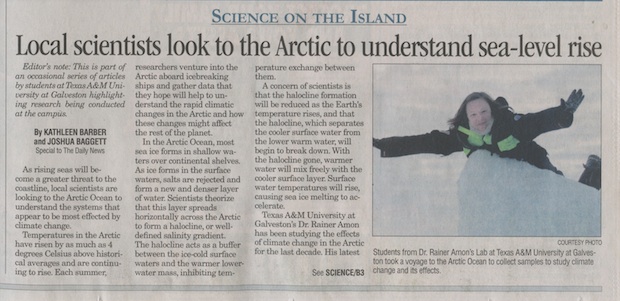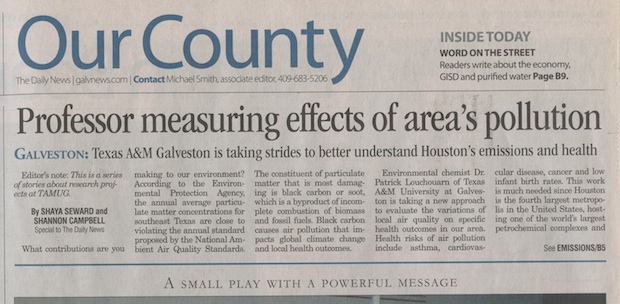Dr. Amons Courses
Courses
MARS 440: Introduction to Chemical Oceanography
This course gives an introduction to chemical and biogeochemical processes in the marine environment and how they relate to the earth system. Topics discussed include: the role of chemical oceanography in earth system science and global change; the chemical composition of sea water; chemical speciation; biogeochemical cycles of major, minor, nutrient, trace elements, and gases in the oceans; marine organic and isotope geochemistry; and sedimentary chemistry and diagenesis. The goal is to convey an understanding of a. how the chemistry of the ocean is affected by life processes; b. the chemical interaction among the geospheres; c. the connection between ocean chemistry and global climate change.
OCNG 420: Introduction to Biological Oceanography
This class focuses on the role that organisms play for biogeochemical processes in the marine environment. We discuss the role of phytoplankton, zooplankton, bacteria, vertebrates, and their benthic counterparts in the oceanic food web and how they relate to the earth system and climate change. At the end of the course I hope the students will be aware of the role of biological processes for the climate system as well as their role in global food production. The students will have developed an appreciation for interdisciplinary research and its potential to answer the complex question in the earth system during a shifting climate. Students are also expected to distinguish scientific facts from fabricated numbers disguised as scientific findings.
MARS 481: Marine Sciences Seminar
The purpose of this course is to learn how to critically research scientific topics, analyze scientific papers, and present research findings to the wider public. In this class students have to choose a research project conducted at TAMUG and describe it in the form of a newspaper article to be published in a local news outlet. The idea behind this "outreach" effort is that undergraduate students are less affected by the scientific language and are more likely to write an article that is easier to follow by the general public. Below are two examples of such articles published in the Galveston County Daily News.

